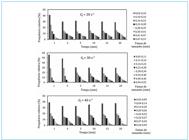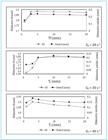ABSTRACT
The processes of formation, growth, rupture, and rearrangement of flocs, which occur during coagulation/flocculation, significantly influence the removal efficiency of the aggregates in water treatment. Therefore, it is important to study the flocs properties because they change continuously during the process and may interfere in the choice of later step for removal of the particles. This article evaluated the efficiency of turbidity removal in sedimentation and dissolved air flotation (DAF) with the use of sodium aluminate as a coagulant. In addition, the flocculation step was monitored through digital images, by non-intrusive method, to study the morphological properties of flocs. The DAF step provided better removal results (greater than 93%) in less process time, showing to be an advantageous step in turbid water treatment. In the flocculation step, the size of the flocs varied from 0.03 to 0.53 mm, with a higher particle concentration in the smaller size classes. The study of the fractal dimension showed that the increase in the intensity of the mixture accentuated the rupture (Dmean of 0.2 mm for 20s for Dmean of 0.1 mm for 40s-1) in the flocs, promoting the appearance of less compact flocs. DAF was less sensitive to variations in aggregate size when compared to sedimentation.
Keywords:
flocculation; sedimentation; dissolved air flotation; flocs properties

 Thumbnail
Thumbnail
 Thumbnail
Thumbnail
 Thumbnail
Thumbnail


